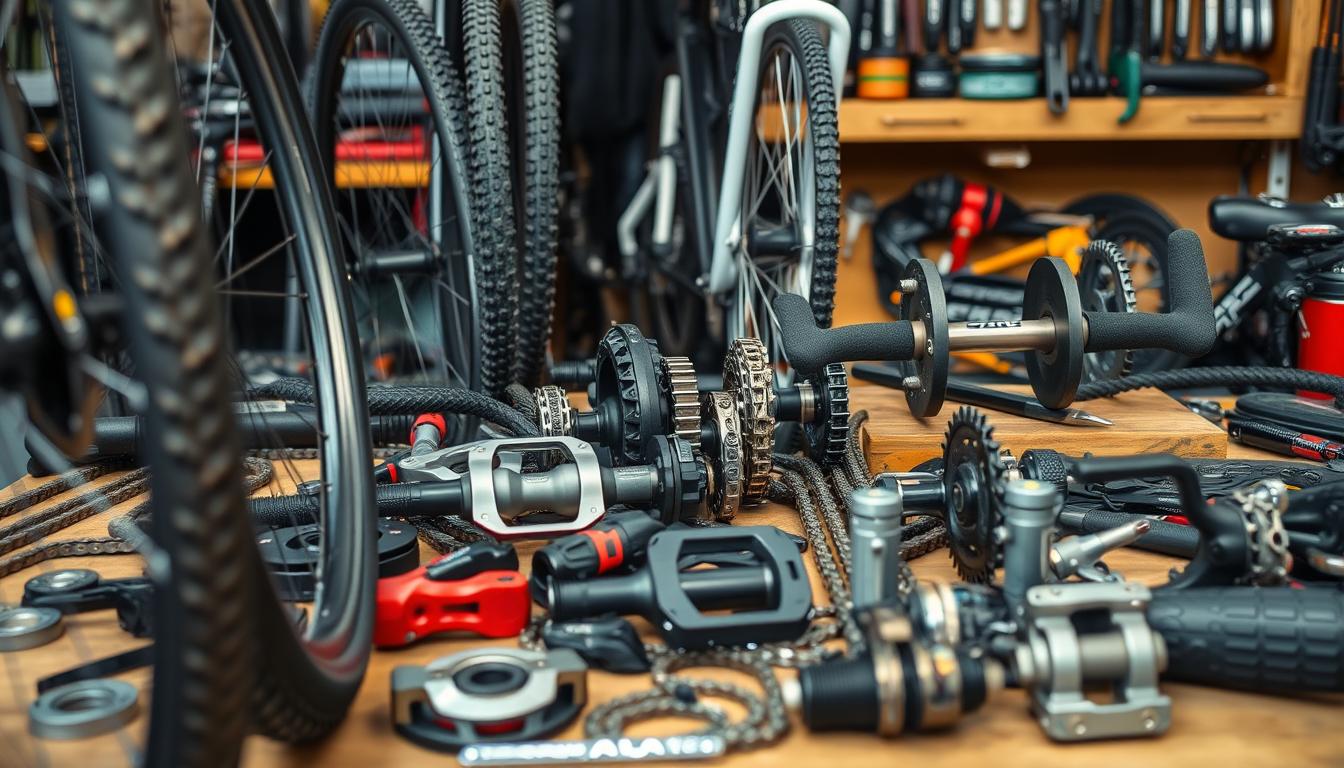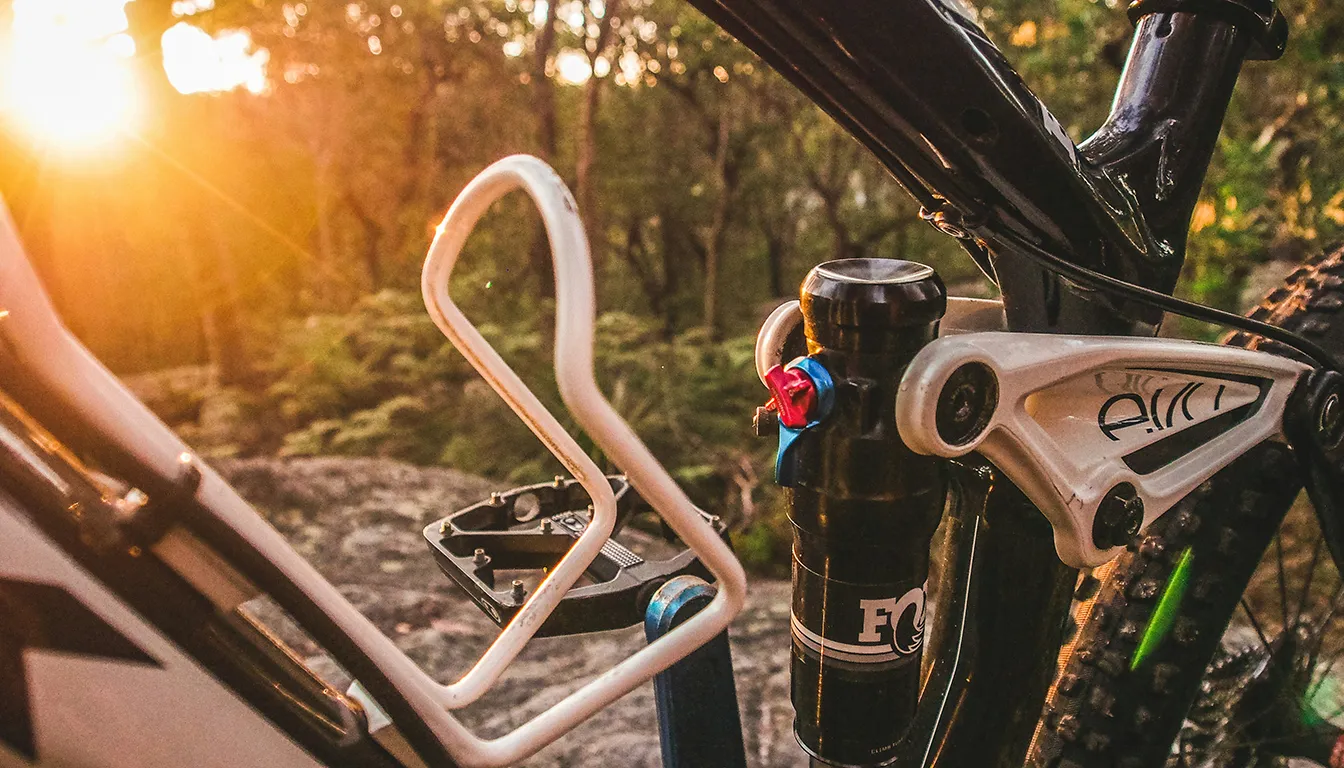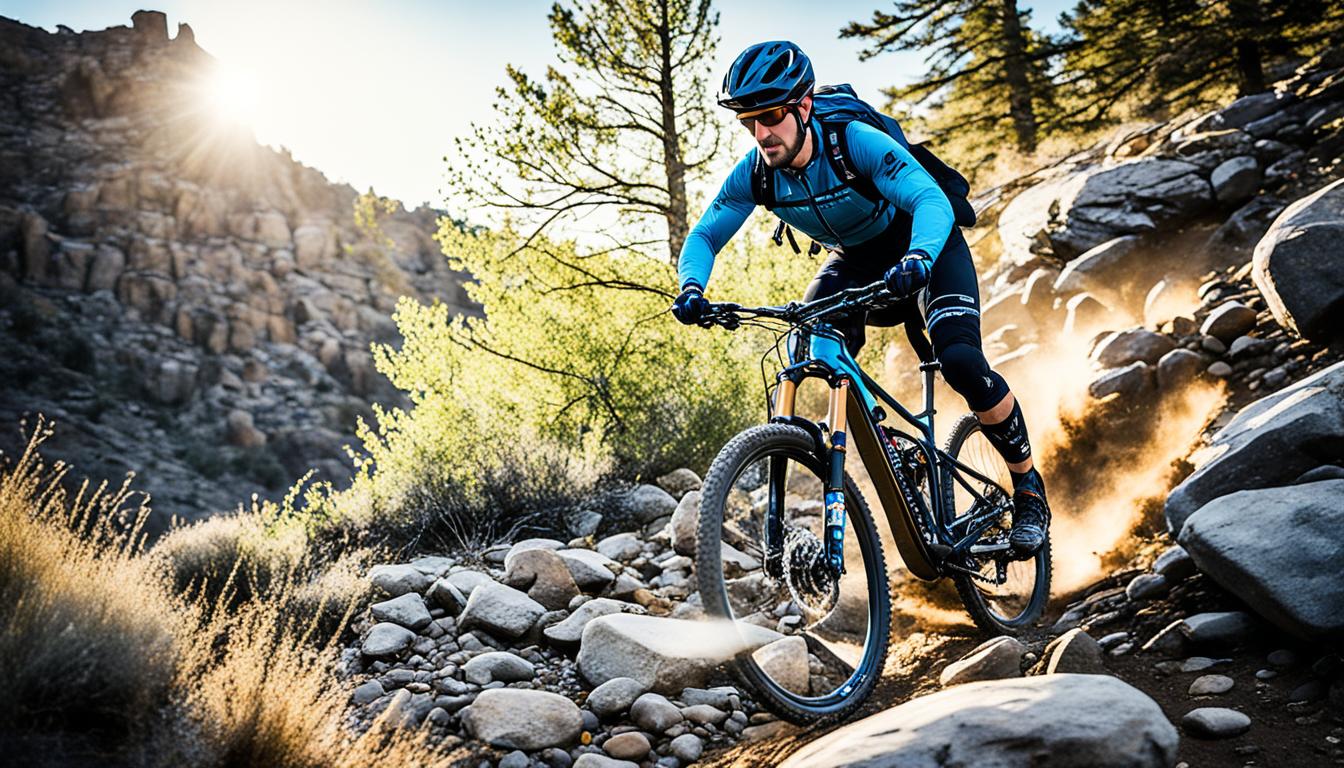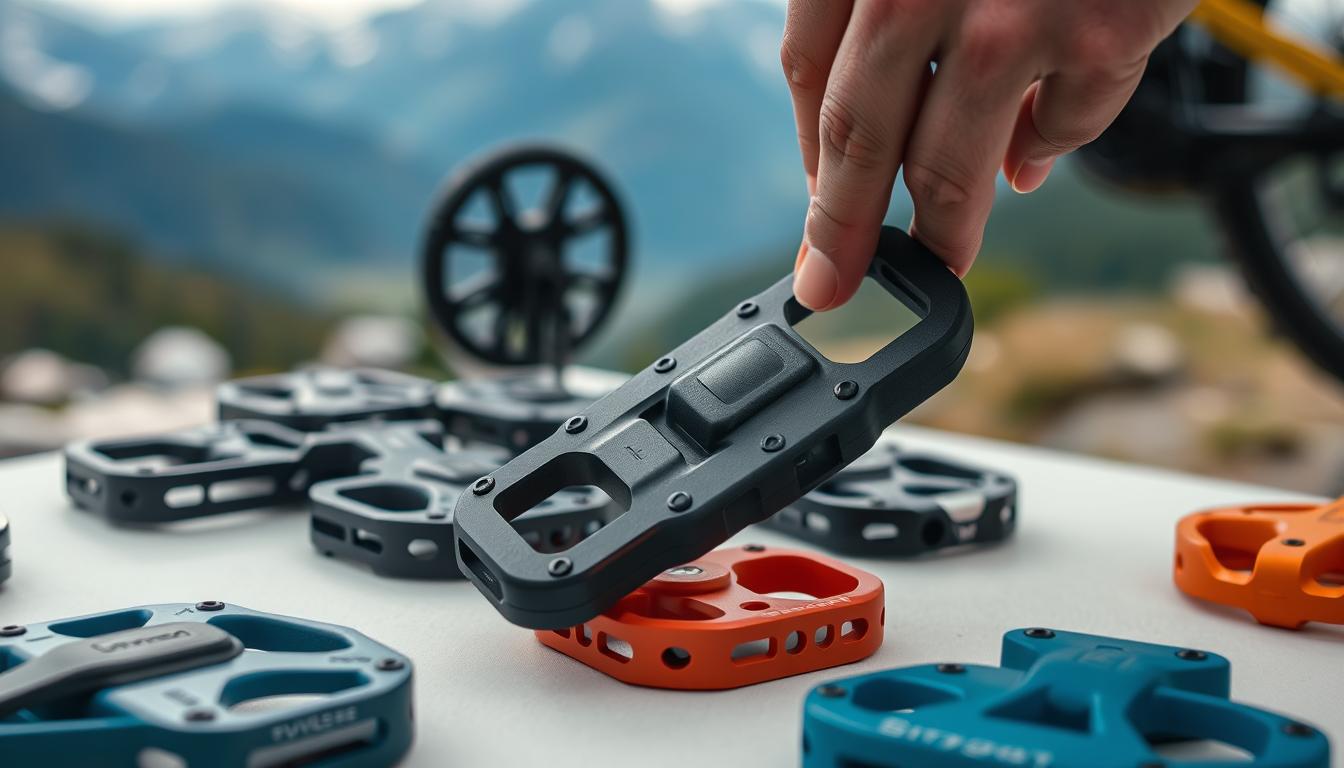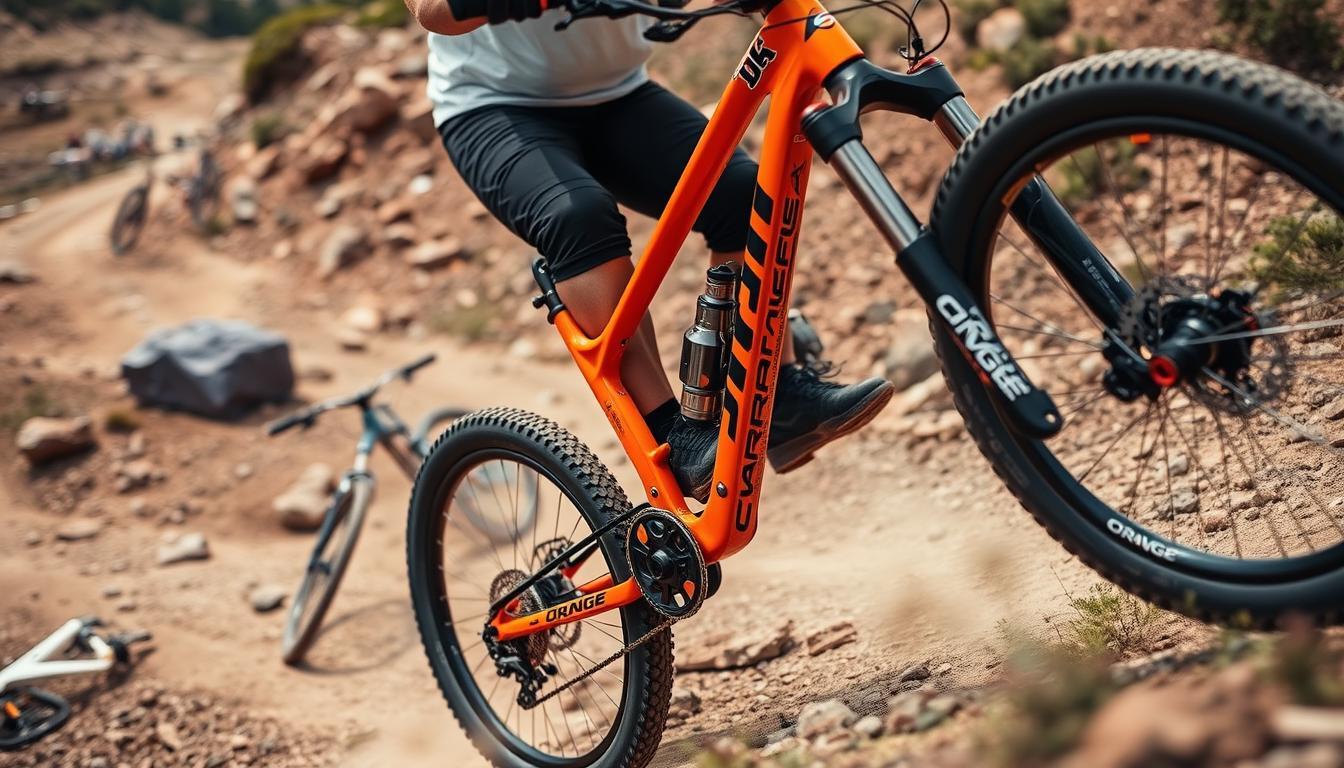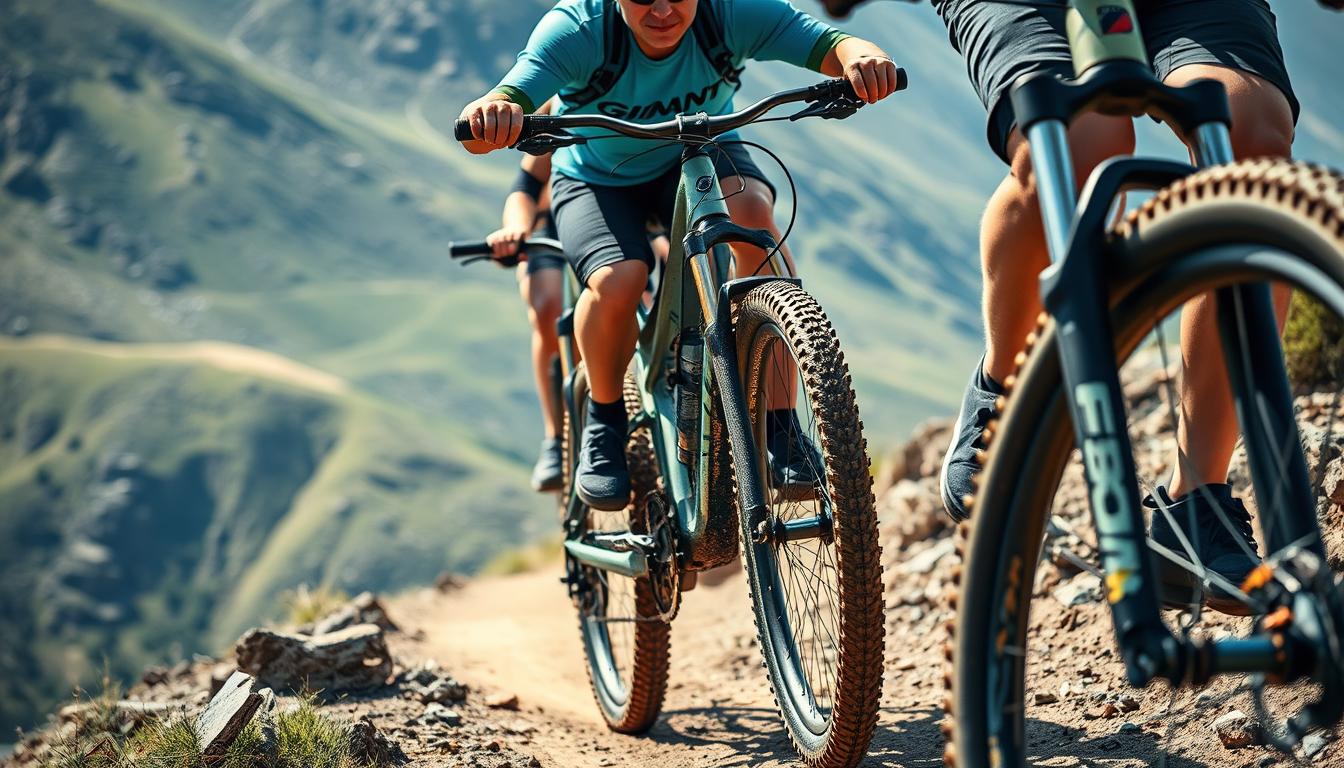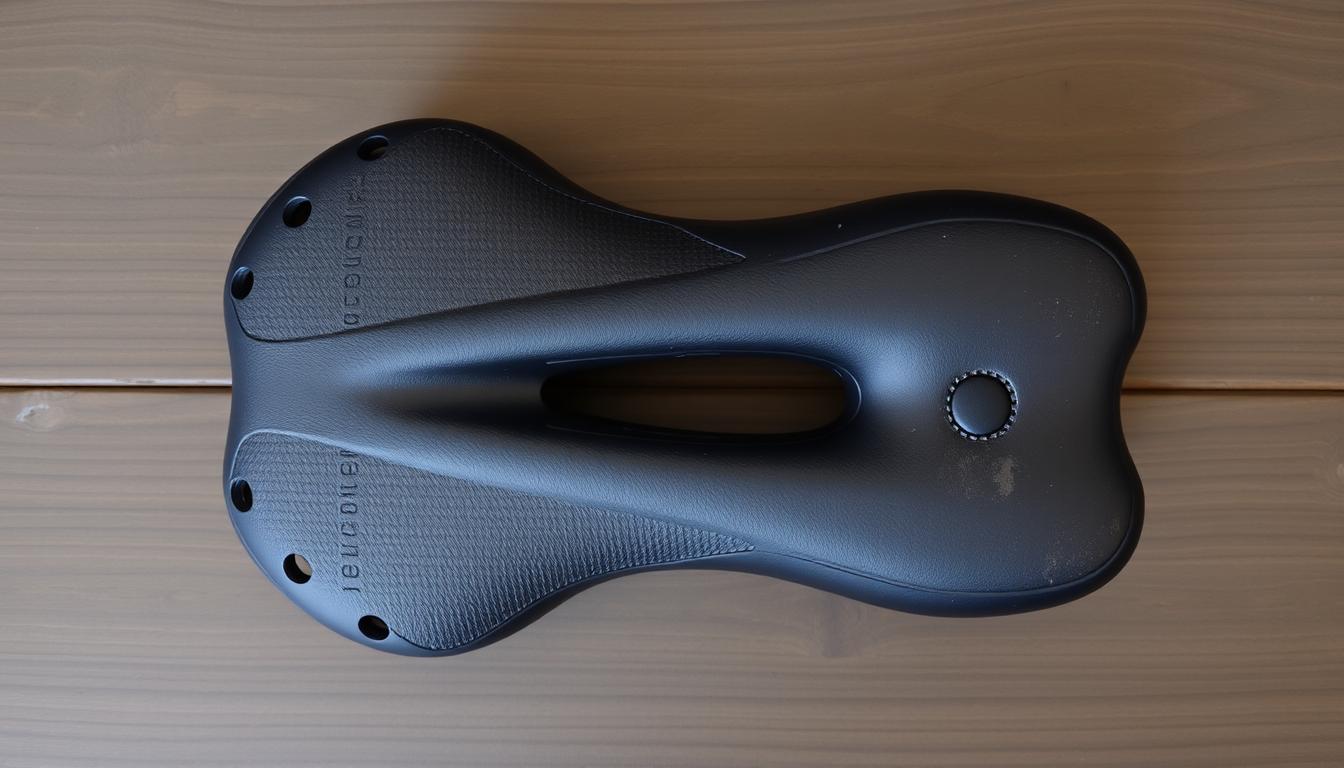Choosing the right mountain bike parts for upgrades and repairs can greatly improve your riding. Upgrading specific parts based on your needs can enhance your bike. This could mean better tyres for improved grip or a more comfortable carbon seatpost.
Knowing how you ride is key. You might value lighter wheels, like the DT Swiss XR1700, which are about 1600 grams. Or, you might want a Shimano XT drivetrain for enhanced performance.
Advice from other cyclists is invaluable. It helps make sure you buy the right parts. This article will discuss how to pick mountain bike parts, considering your riding style and goals. We’ll also look at the importance of parts being compatible.
Understanding Your Riding Style
Choosing the right mountain bike parts means knowing your riding style well. Different biking preferences change what components you need. Casual riders and competitive cyclists look for different things for their bikes. Comfort is key for some while others chase speed with lightweight parts.
Trail conditions affect what parts work best. Those on rocky paths might want strong tyres and good suspension. But, if you’re riding on smooth paths, a lighter bike frame helps with climbing. Brands like Trek, Cannondale, and Specialized have many options for these needs, supporting various cycling techniques.
The design of a bike frame changes how it rides on different terrains. For example, cross-country bikes are built for better climbing. Downhill bikes offer more control on steep paths. Knowing what kind of riding you like helps choose the right bike parts.
To learn more about biking styles, check out this guide on mountain bike styles. It covers how different materials and frame designs match with trail types. Whether you prefer affordable aluminium or high-performance carbon fibre, understanding your style simplifies upgrading your bike and enhances riding joy.
Identifying Performance Goals
Setting performance goals is key for any cyclist’s journey. Goals could be improving speed, better riding skills, or losing weight. It’s important to set these goals early. This stops random upgrades and makes sure improvements match your objectives.
For cyclists preparing for events, having a training plan is a must. This plan helps set clear, achievable aims over months. It involves looking at past performances and setting SMART goals. These goals make it easier to get better at cycling.
Understanding the needs of different mountain biking types is important too. Gravity racing and enduro racing require special skills and fitness. Knowing this helps cyclists set the right goals and choose the best bike parts.
Writing down your goals can boost your chances of success. Studies show that those who note their goals and make a plan often achieve them. Getting advice from seasoned bikers and looking at reviews also helps. It can guide you on which bike parts will best improve your experience.
Exploring Common Mountain Bike Parts
Choosing the right parts for your mountain bike can really change your cycling. Knowing about tyres, touchpoints, and wheels helps you get better grip and performance. These elements are key to a great ride.
Tyres: Enhancing Grip and Comfort
Tyres are crucial for connecting well with the trail. Picking the right tyres can boost your bike’s handling and comfort. Tubeless tyres offer better grip on different terrains and fewer punctures. This makes them a top choice for a quality ride.
Touchpoints: Finding Your Comfort Zone
Touchpoints are grips, pedals, and saddles. They impact how comfortable you feel on long rides. It’s important to choose parts that suit your body and riding style. Trying different pedals and saddles helps you find what’s best for you. Always go for what feels right for you.
Wheels: Balancing Weight and Performance
Wheels link performance to the bike’s weight. Lighter wheels make your bike more agile and fun to ride. Great wheel options come from brands like DT Swiss and Roval. Think about wheel design and materials, as these influence grip and how you handle trails.
Evaluating Options: New vs Second-Hand Parts
Deciding between new and second-hand bike parts affects your budget. Used parts save money, allowing for smart investments in quality performance. They make lowering upgrade costs attractive.
Benefits of Buying Used Components
Second-hand components save money up-front. Many high-quality used parts cost much less than new ones. Buying used also reduces how quickly parts lose value. For example, a bike that’s 5 years old may keep about 40% of its initial price. This makes it a good choice if you’re watching your spending. Plus, buying from trusted dealers or shops ensures quality and durability.
How to Identify Quality Second-Hand Parts
Finding good second-hand parts means paying attention. Look for signs of wear like rust or cracks. Make sure wheels spin well and brakes work properly for safety. Talking to bike community groups helps get tips on where to find reliable parts. Visiting trusted sources is useful for advice on the second-hand market. Learning about bike specs helps with future upgrades, making it easier to find good used parts.
Researching Component Compatibility
When you think about upgrading your bike, knowing how parts fit together is key. This ensures your bike works well and lasts longer. Picking parts that match your bike avoids extra costs and makes riding more enjoyable.
Understanding Drivetrain Systems
Knowing how drivetrain systems work is vital for a mountain bike’s performance. Most have indexed shifters for easy gear changes. Cassettes might have 5 to 11 gears. Chainrings range from one to three. Knowing these details helps you match shifters, derailleurs, and cassettes. This leads to smoother gear changes and better rides.
Fork and Suspension Compatibility
Choosing the right fork and suspension is key for bike upgrades. You must consider the headset size and bike geometry. For example, picking a fork that matches, with 1 1/8″ headset or the right travel (100-140mm), matters a lot. This ensures your bike handles well, especially in tough spots like bike parks.
Making Cost-Effective Upgrades
When upgrading your mountain bike, think smart to get the best value. Focus on prioritising upgrades that boost performance and comfort. Knowing which parts to upgrade makes your budget go further.
Prioritising Upgrades for Maximum Impact
Choose upgrades that offer big benefits. For example, better tyres and a tubeless setup can cut weight and improve grip on turns. Also, upgrade contact points like pedals, grips, and saddles for more comfort and control on long rides. If your bike is older, a new drivetrain or better brakes can make a huge difference in how it rides.
Budget-Friendly Options to Consider
Look for budget-friendly bike parts to boost your bike’s performance without breaking the bank. Alloy wheels, for instance, are lighter and improve ride quality versus pricier carbon ones. There’s a range of parts to fit any budget. Many riders find value in upgrading bit by bit. This approach lets you tailor your bike to your liking while staying within budget. For more tips on savvy upgrades, visit: best upgrades for your mountain bike.
Conclusion
Choosing the right mountain bike parts is key for better performance and safety. Knowing your riding style helps make smart choices. It’s also important to look into how parts fit together, given the wide range of options.
Regular maintenance, like checking brakes and tires, greatly enhances your ride. Upgrading parts, like getting lighter rims or better suspension, boosts both safety and fun on tough trails.
Every little improvement can make a big difference in how comfortable and efficient your bike feels. Listening to experts and paying attention to your equipment makes biking safer. To learn more about handling high speeds safely, check out this interesting article.
FAQ
What are the essential mountain bike parts I should consider upgrading?
Consider upgrading tyres, grips, pedals, and saddles first. These upgrades improve grip, comfort, and performance across different terrains.
How do I determine my riding style?
Identify your riding style by thinking about how often you ride and the terrains you tackle. Casual riders might want more comfort. Competitive cyclists might focus on reducing weight for speed.
What are some common performance goals for mountain bikers?
Bikers often aim to be faster, more stable, and have lighter bikes. Having clear goals helps choose the right upgrades for better rides.
Are there advantages to purchasing second-hand mountain bike parts?
Second-hand parts can save money without sacrificing performance. Many bikers find high-quality used components that meet their needs well.
How can I ensure compatibility when upgrading parts?
It’s vital to study part compatibility. Check that new parts, like wheels, fit your bike. Use manufacturer specs and advice from bike shops to dodge compatibility problems.
What tips are there for making cost-effective upgrades?
Focus on upgrades with the biggest impact, like better tyres or wheels. Alloy wheels, for instance, are less pricey than carbon but still boost performance effectively.
How important are touchpoints in my mountain bike setup?
Touchpoints such as grips, pedals, and saddles are key for comfort and control. This is crucial for enjoyable rides, especially long ones.
What should I look for when assessing second-hand bike parts?
Look for wear like scratches or rust on second-hand parts. Buying from reputable sellers is essential. Joining local cycling groups can help you find quality components.
